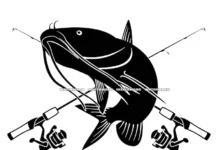To Swivel Or Not
By FRANK SARGEANT fsargean@tampabay.rr.com
Published: Dec 16, 2005
Swivels on baitcasting or spinning gear generally are considered the mark of an amateur, used mostly because the novice cannot master the somewhat tricky line-to-leader knots that evade these metal fixtures.
Most serious anglers avoid swivels between line and leader because they are notorious for knocking the eyelets out of rod guides. They reel in smoothly enough, but when they go shooting back out on the cast, they hammer the guide inserts and snatch them out.
Some anglers also don’t like swivels because they are fairly visible, and the theory is that the less visible the tackle is to fish, the more fish you catch.
However, in the past few years, my feeling toward swivels has mellowed a bit. Used in the right way at the right time, they can greatly enhance your fishing.
First, of course, there are times when you must use a swivel. If you toss a spoon without one, you will ruin your line in 30 minutes because of the twist the lure imparts. In fact, one of the best rigs for the classic Johnson Silver Minnow and similar single-hook redfish spoons is to attach one barrel swivel to the lure eye with a split ring, then put another between leader and line 12 to 18 inches above the lure. A single swivel doesn’t eliminate all the twist.
The same rig is good for trolling anything that might spin, including the small multi-hooked spoons used for Spanish mackerel and bluefish, and the larger single-hook Drones and similar ones for kingfish. In these cases, the mono or fluorocarbon leader often is replaced with No. 2 to No. 6 coffee-colored wire. Many offshore anglers use ball-bearing swivels, which are generally stronger and smoother than the conventional barrel swivel.
But there are other inshore uses, lesser known, that are the secret of some very skilled anglers.
One of those anglers is Ruskin’s Richard Sullivan, manager of Cockroach Bay Preserve and an avid flats angler.
“I use a swivel because it gives me just the right amount of weight to sink a live shrimp into a hole, but not enough to get me snagged on bottom,” Sullivan said.
An unweighted medium to large live shrimp can swim strongly enough to carry a 1/0 short-shank circle hook with it and stay off bottom, but add the swivel on a couple feet of leader and the shrimp slowly is pulled down into the depths – where snook and redfish wait in winter.
The swivel Sullivan uses for this is a size 2, which is larger than needed for strength but just right for weight.
Of course, you could use a tiny split shot pinched on the leader just below the line connection and get the same result. Then, however, you’d have to tie that tricky uni-knot or blood knot to connect.
Some anglers have discovered that a size 2 swivel works nicely as a weight when used with a jerkbait, particularly those made of the Cyberflexxx super-plastic introduced a few years back. Lures made of Cyberflexxx, which is highly buoyant, tend to float a typical 4/0 jerkbait hook. The lure is actually too light for anything but a topwater, but add the swivel 2 feet up the leader and the jerkbait is pulled nose-down into the water.
When you give this thing a sharp jerk, the lure darts and rolls like mad, with the swivel adding a sort of bolo action that greatly increases the erratic movement. By fishing it slow, you can scrub bottom at depths to about 6 feet. Fish it fast and it’s a surface lure.
And the very tough plastic, allegedly 30 times stronger than conventional soft plastics used in most fishing lures, allows catching dozens of fish on a single bait. It doesn’t slide down on the hook as softer baits do, can be stretched to three times its length without tearing, and yet feels softer than conventional “jelly” type plastics. Strike King and other companies make the lures in a variety of shapes, sizes and colors.
Because the lure is buoyant, it floats above submerged grass and snags, another advantage over denser lure bodies. Again, that swivel has just enough weight to sink it as deep as it needs to go, typically 4 to 6 feet in winter, though you also can fish it in 1-foot depths when you encounter tailing redfish on the low-tide flats.
Finally, a swivel fished with an otherwise unweighted plastic shrimp can be just as effective as the same rig with a live shrimp. The plastic imitations work particularly well where there are numerous pinfish or small snapper or sheepshead, which will pinch off a live shrimp before a snook or redfish can get to it.
All of this said, you still have the casting problem with swivels. The trick is to keep the swivel just outside the rod tip. If you don’t, your guides will suffer.
The casting arc has to be slower and describe a wider arc than you might use in snapping a bait at a target without the obstructing swivel, but with practice it can be mastered and you can get good distance. The big thing to remember is that the swivel is wound up against the tiptop, but never inside it. If it is, bad things will happen, which might offset the good things likely to happen when you add a swivel to your rigging arsenal.
- Jay Mastry - March 26, 2024
- Captains Corner, Gorta - March 23, 2024
- Dave Zalewski - March 12, 2024











